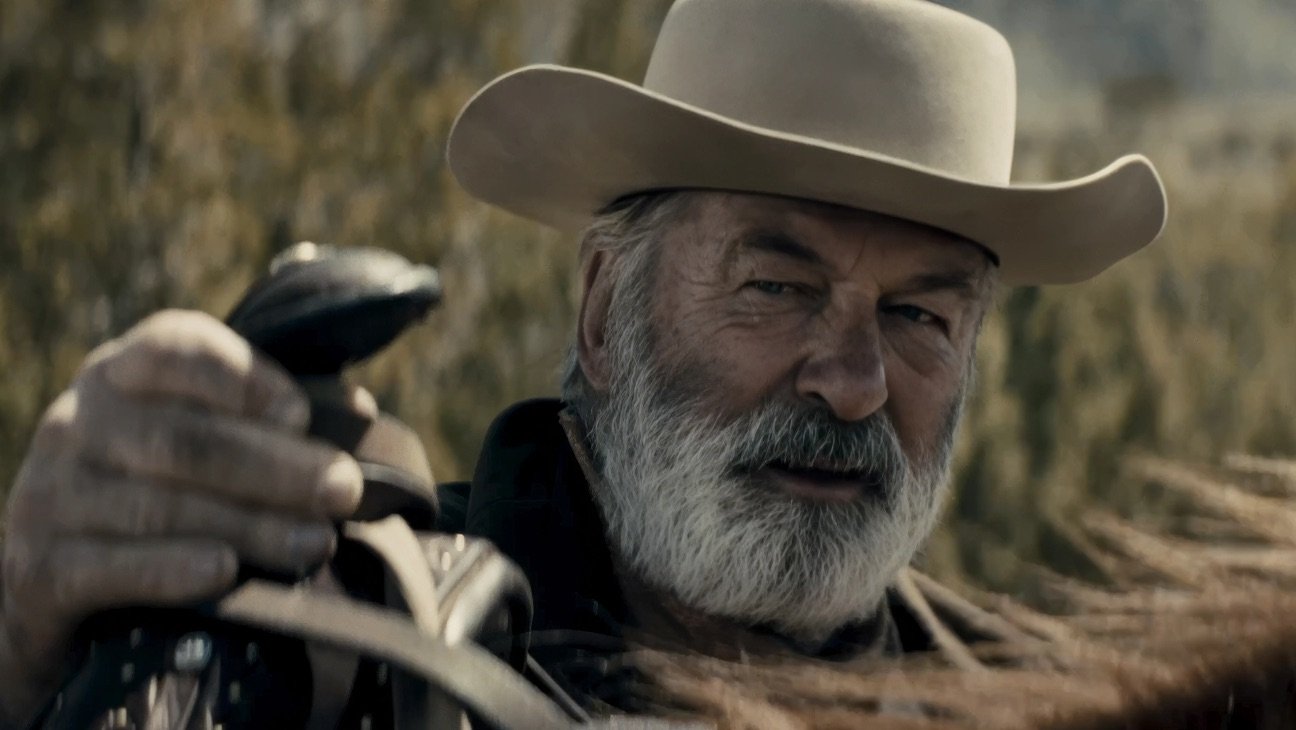‘Rust’ Review: A Cinematic Epitaph Enmeshed in Tragedy and the Limitations of Genre Convention
Alec Baldwin in 'Rust.' Courtesy of Rust Movie Productions LLC
A meditative but flawed Western that grapples with narrative ambition and ethical weight.
In a cinematic environment increasingly dominated by digital spectacle and franchise fatigue, Joel Souza’s Rust emerges not simply as a film, but as a profoundly fraught artifact of artistic intention colliding with tragic consequence. Originally conceived as a relatively modest Western character study, the production’s transformation into a cultural flashpoint was catalyzed by the death of cinematographer Halyna Hutchins, whose fatal on-set shooting irrevocably altered both the public perception and the thematic resonance of the final work. Released to both theatrical and digital platforms, Rustoccupies a singular space within American film discourse—at once a dramatized narrative and a metatextual document of mourning and controversy.
Set against the backdrop of 1880s Wyoming, the plot follows Lucas (Patrick Scott McDermott), a 13-year-old boy sentenced to death for the accidental shooting of a rancher. His estranged grandfather Harland Rust (Alec Baldwin), a fugitive shaped by years of outlaw life, rescues him from incarceration and shepherds him toward the Mexican border. As they traverse the harsh terrain, the film unfolds as a dialectic on transgenerational trauma, redemptive fugitivism, and the moral scaffolding of the American West.
Baldwin, who co-wrote and co-produced the film, offers a restrained, world-weary performance that reverberates with personal subtext. His Harland Rust is a man caught in the liminal space between penance and paternal instinct, whose emotional opacity feels less like an acting choice and more like an involuntary reckoning with the gravity of his real-world entanglements. In contrast, McDermott’s Lucas functions as the film’s emotional lodestar, embodying the fragility and resilience of youth with a performance that transcends the genre’s usual sentimental constraints.
Yet despite its psychological undercurrents, Rust often falters in the execution of its broader structural ambitions. Souza attempts a tripartite narrative framework—interweaving the central fugitive storyline with the pursuits of Sheriff Wood Helm (Josh Hopkins) and religiously zealous bounty hunter Fenton Lang (Travis Fimmel)—but these parallel arcs lack the cohesion necessary to elevate the film into thematic synthesis. The result is a dramaturgical patchwork, where each strand gestures toward profundity without fully achieving it.
The character of Sheriff Helm is emblematic of this problem. His subplot, involving a terminally ill son, is presumably intended as a narrative counterpoint to Rust’s surrogate paternal journey. However, due to limited screen time and underdeveloped characterization, Helm’s arc remains emotionally inert. Fimmel’s Fenton Lang, while compelling in his portrayal of sanctimonious menace, similarly feels misaligned with the film’s tonal palette—his near-mythic fanaticism clashing with the otherwise grounded tenor of the narrative.
Despite these dramaturgical shortcomings, Rust occasionally achieves moments of formal distinction. The cinematography—partially realized by Hutchins and completed by Bianca Cline—is both elegiac and elemental. The visual language of the film frequently communicates what the dialogue cannot: the desolation of frontier life, the intimacy of trauma, and the transient beauty of fugitive freedom. Particularly in scenes devoid of exposition, the interplay of natural light and shadow invites viewers into a space of quiet contemplation rarely afforded by contemporary genre films.
Souza’s screenplay intermittently gestures toward larger mythopoeic concerns—the firearm as a dual symbol of justice and chaos; the Western frontier as a crucible for existential and moral experimentation. However, these motifs remain under-theorized within the narrative architecture. The film’s philosophical engagements, though earnest, are ultimately subtextual rather than interrogative, leaving much of its ethical inquiry unexplored.
This tension is most acutely embodied in the figure of Harland Rust himself. His arc purports to explore redemption through action, yet the film stops short of rigorously interrogating whether his redemptive efforts are ethically adequate or merely performative. This ambiguity, while thematically appropriate, feels less like deliberate provocation and more like narrative evasiveness.
The supporting cast yields uneven results. Hopkins and Fimmel bring gravitas to their roles, but their characters are written in broad strokes. The representation of Indigenous figures and settler culture lacks nuance, relying on archetypes that undermine the film’s otherwise serious intentions. Such representational issues point to the broader problem of thematic overreach within an undercooked narrative infrastructure.
POPULAR ON THE CINEMA GROUP
Technically, Rust is commendable. Its production values—particularly the sound design and period-accurate mise-en-scène—demonstrate a high level of craftsmanship. Yet this technical competency becomes a double-edged sword, revealing the gap between what the film aspires to be and what it ultimately delivers. It is a visually immersive but narratively inconsistent work, burdened by the very history that necessitated its completion.
Ultimately, Rust cannot be disentangled from its extratextual significance. As a film, it is a solemn, intermittently engaging Western that struggles to reconcile its ambitions with its limitations. As a cultural object, it stands as a complicated eulogy—honoring a life lost, bearing the scars of its creation, and inviting reflection on the precarious intersection of art, labor, and accountability in modern filmmaking.
Rating: ★★★☆☆
Rust
Release date: Friday, May 2
Cast: Alec Baldwin, Frances Fisher, Josh Hopkins, Travis Fimmel, Patrick Scott McDermott, Devon Werkheiser
Director-screenwriter: Joel Souza
Run Time: 2 hours 19 minutes








